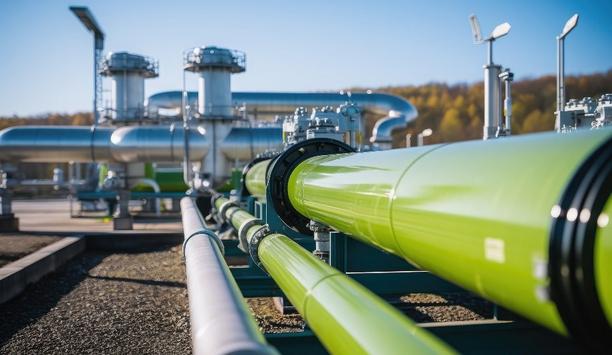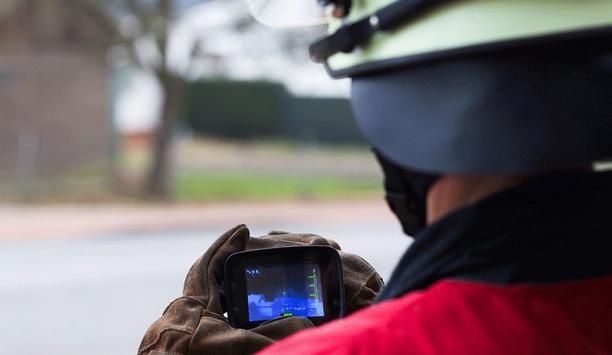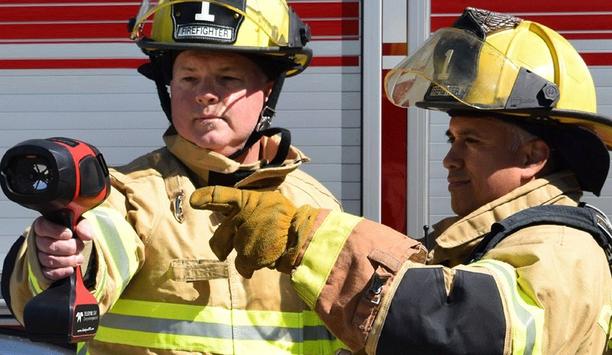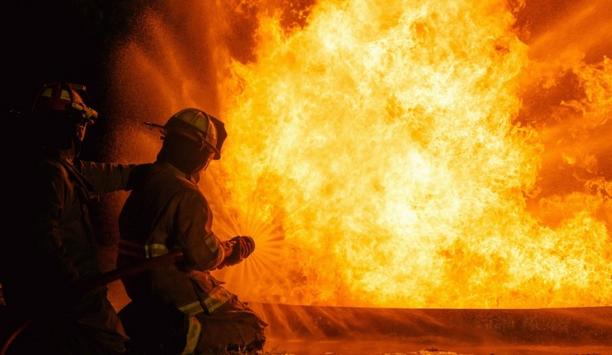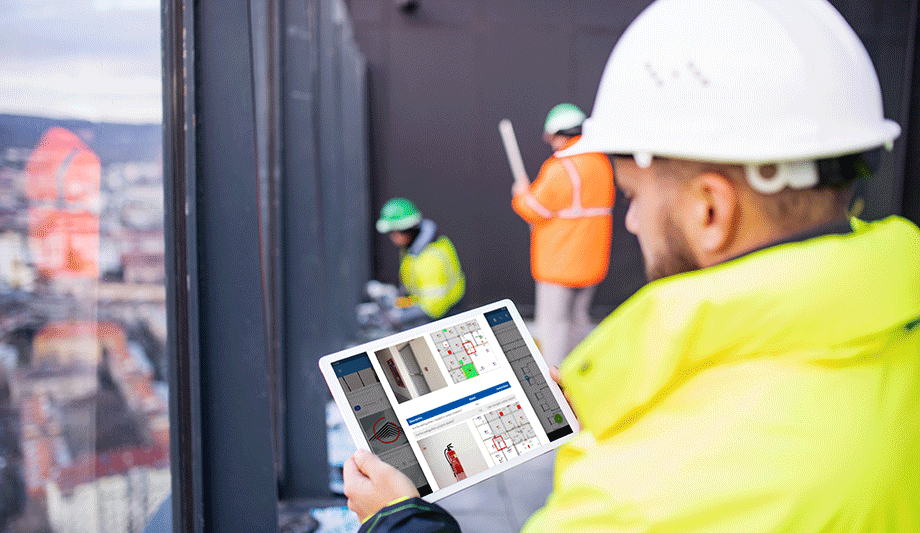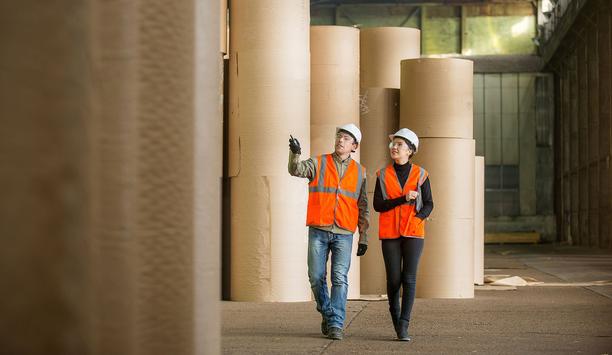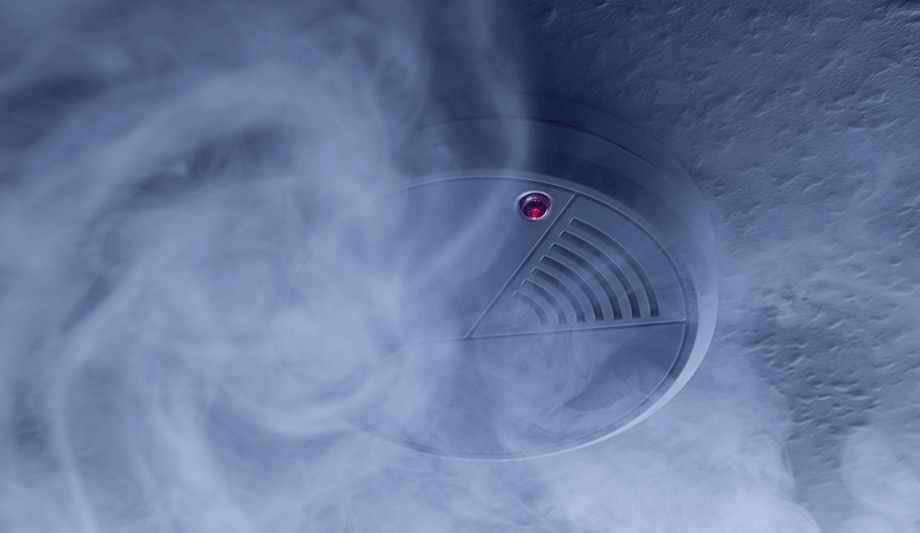FLIR Commercial Vision Systems BV - Experts & Thought Leaders
Latest FLIR Commercial Vision Systems BV news & announcements
Renewable hydrogen is set to play a crucial role in the energy transition. European member states are already experimenting with this promising energy carrier, and they are testing how they can repurpose existing natural gas distribution networks to bring hydrogen to the consumer. Hydrogen is a highly flammable gas. That is why technical staff working on these hydrogen distribution networks will need to be trained for safety. They will also need to be equipped with the right tools to detect hydrogen leaks and see hydrogen flames in time. One such tool is the thermal imaging camera. Clean energy transition Hydrogen is enjoying renewed and growing attention around the world. In Europe for example, hydrogen is considered as a key priority to achieve the European Green Deal and Europe’s clean energy transition. Hydrogen is also an interesting alternative for heating old or historic buildings It can be used as a feedstock, a fuel or an energy carrier and storage, and has many possible applications across the industry, transport and power sectors. Hydrogen is also an interesting alternative for heating old or historic buildings, which are typically difficult to insulate, and as a result, where all-electric heat pumps are not practical. Environmentally friendly way Although hydrogen is seen as a clean energy carrier, it is not always produced in a clean way. There are several ways to create it. Gray hydrogen is produced from fossil fuels (methane) through a process called steam reforming and results in the emission of carbon dioxide (CO2). Blue hydrogen also relies on this principle, although 80% to 90% of the emitted CO2 during the process is captured and stored underground. As the name suggests, green hydrogen is the most environmentally friendly way to produce hydrogen. This is done through electrolysis, which means using renewable electricity to split water into hydrogen and oxygen. Unlike other renewable energies, hydrogen has the potential for being stored in large quantities for later use. Dedicated hydrogen pipeline The storage potential of hydrogen is particularly beneficial for power grids This is where hydrogen becomes interesting, from an environmental and climate standpoint. When produced at times when solar and wind energy resources are abundantly available, renewable “green hydrogen” can support the world’s electricity needs, providing long-term and large-scale storage. The storage potential of hydrogen is particularly beneficial for power grids, because it allows for renewable energy to be kept not only in large quantities but also for long periods of time. With all its potential for green energy, the question remains how hydrogen, once produced, can be efficiently delivered to the consumer or to the point of use in large quantities. Until now, the market has been discouraged by the substantial expenses that are associated with establishing a dedicated hydrogen pipeline or delivery infrastructure. Natural gas pipelines Another option that has been gaining more attention in recent years is converting the existing natural gas distribution network for the passage of hydrogen. Obviously, hydrogen and natural gas have different characteristics – for example in terms of flammability, density, and ease of dispersion – but with the infrastructure for natural gas already in place, a conversion for hydrogen distribution could be economically interesting. Several demonstration projects and proofs of concept across Europe have already demonstrated that with a few adjustments, hydrogen can be injected into existing natural gas pipelines and delivered to a wide range of end-point applications. Private gas network In 2020, a pilot hydrogen project went operational in the UK. The HyDeploy demonstration showed that it was possible to blend up to 20% of hydrogen with normal gas supply into Keele University’s private gas network, which serves 17 faculty buildings and 100 domestic properties. Also in the UK, a feasibility study - the H21 Leeds City Gate report – was carried out, confirming that conversion of the UK gas network to 100% hydrogen was both technically possible and could be delivered at a realistic cost. Another pilot project started in 2022, in Lochem’s Berkeloord district (the Netherlands). There, twelve homes are heated using hydrogen transported over the existing natural gas grid. In Hoogeveen, the Netherlands, the development of the world’s first hydrogen district was planned for 2023. Hydrogen distribution networks Hydrogen (H) is a gaseous substance that is the simplest member of the family of chemical elements These projects must demonstrate that hydrogen is a safe, comfortable and affordable alternative to natural gas. At the time of writing, many more demonstration and pilot projects are being developed, which shows the growing interest in the development of hydrogen distribution networks. Hydrogen (H) is a gaseous substance that is the simplest member of the family of chemical elements. Under ordinary conditions, hydrogen gas is a loose aggregation of hydrogen molecules, each consisting of a pair of atoms, a diatomic molecule, H2. Availability: hydrogen is the most abundant element in the universe but only makes up only about 0.14 percent of Earth’s crust by weight. Diffusivity: hydrogen’s greatest advantage, in terms of safety, is its ability to diffuse through the air much faster than other gaseous fuels, making it less likely to accumulate. Toxicity: colorless, odorless, tasteless, and non-toxic Flammability: hydrogen is a highly flammable gas. Its broad flammability limits and low ignition energy increase risk. Visibility: Unlike methane and gasoline fires, hydrogen burns with a nearly invisible flame in daylight. However, contaminants in the air can create some visibility. Hydrogen distribution pipeline Research has shown that hydrogen can be used to displace natural gas from existing natural gas pipelines Now they know that existing infrastructure can be used: how can existing gas distribution pipelines be safely decommissioned as a natural gas pipeline and (simultaneously) commissioned as a hydrogen pipeline during the conversion to a hydrogen network? From a practical standpoint, the distribution pipes will need to be purged. Natural gas will need be let out and hydrogen gas will need to be let in. Research has shown that hydrogen can be used to displace natural gas from existing natural gas pipelines, and that a natural gas distribution pipeline can immediately be recommissioned as a hydrogen distribution pipeline after the natural gas has been displaced. Thermal imaging camera A test set-up with natural gas and hydrogen flares: with a visual camera, the hydrogen flares are not or hardly visible. However, a thermal imaging camera can visualize them based on the thermal radiation the hydrogen flares emit. One frequently used technique when purging pipes is flaring. This is a safety measure often employed in industrial settings where hydrogen is used. The process involves burning off excess hydrogen in a controlled manner. Hydrogen flaring is typically done during maintenance, leak detection, or other situations where there is excess hydrogen that cannot be safely stored or disposed of in a controlled way. Unexpected flame movements Maintenance workers should therefore wear protective clothing that can withstand the heat Although hydrogen is not toxic, there are specific hazards associated with working with hydrogen gas, and flaring it poses certain risks. Just like many other gases, hydrogen is highly flammable and can ignite rapidly in the presence of oxygen. Maintenance workers should therefore wear protective clothing that can withstand the heat and be aware of temperature conditions to avoid burns. Maintenance workers should also use tools that are intrinsically safe to avoid spark discharge accidents. Monitoring hydrogen flares To safely work with hydrogen, technical staff needs to be trained and they need to use the appropriate tools. One of the difficulties when working with hydrogen during flaring activities is that a hydrogen flame is not always visible. Hydrogen is also very light and – since flaring is done in open air – technical workers always need to be on guard for unexpected flame movements due to wind bursts. To ensure safety, technical staff need a better view of the flame during flaring works. Some of the most frequently used technologies to monitor hydrogen flares are thermocouples, ultraviolet (UV) sensors and infrared (IR) sensors. Sometimes, certain contaminants like water or dust are added to the hydrogen, which makes the flame more visible. Ideal complementary tool Although hydrogen flames are invisible during daylight, they do emit thermal radiation Although all above-mentioned technologies are valuable to detect hydrogen fast and accurately, they are missing one essential feature: they do not allow to actually see a hydrogen flame. That is why thermal imaging cameras are the ideal complementary tool. Although hydrogen flames are invisible during daylight, they do emit thermal radiation. Thermal cameras can detect these temperature changes, allowing technical staff to visualize the exact movement of the flames and safely approach a hydrogen flame. Monitoring hydrogen flares Thermal imaging cameras are an indispensable tool for anyone working on hydrogen pipelines or monitoring hydrogen flares. Here’s why: Improved situational awareness: Thermal imaging cameras provide a visual representation of the entire scene, including the hydrogen flare installation. This offers improved situational awareness, which can be particularly useful in industrial settings where multiple processes are ongoing. Improved staff safety: Thermal cameras allow technical staff to monitor flames from a safe distance. They don’t have to approach the flame closely, and the detection sensors inside a thermal camera do not need to make physical contact with the flame. Multiple uses: Thermal imaging cameras have a broad range of applications, beyond flame detection. They can be used for electrical inspections, mechanical inspections, and more. This versatility makes them a very economical tool for a range of maintenance and safety tasks Seeing temperature differences: Thermal imaging cameras enable maintenance workers to visualize subtle temperature differences. This enables them to detect not only flames, but also hotspots, overheating problems, and other potential issues related to possible equipment malfunctions. Fewer false alarms: Unlike flame detectors in certain environments, thermal imaging cameras are less prone to false alarms caused by non- flame sources such as sunlight, welding arcs, or hot surfaces. Greater situational awareness Thermal and acoustic cameras from FLIR support technical maintenance professionals in safely working in hydrogen environments. FLIR cameras provide users with detail-rich thermal images in a variety of thermal color palettes enabling greater situational awareness and understanding. Some of the most suitable camera solutions for hydrogen flame monitoring include: FLIR ONE® Edge Series Thermal Cameras with Wireless Connectivity FLIR Cx5 Hazardous Location- Rated Thermal Camera FLIR K-Series High-Performance TIC for Firefighting FLIR Cx-Series Compact Thermal Cameras FLIR Ex Pro-Series Infrared Cameras with Ignite™ Cloud In addition, the following technology allows inspectors to detect gas leaks, either by visualizing an added tracer gas (CO2) or by visualizing the sound of a leak. FLIR G343 Optical Gas Imaging (OGI) Camera for CO2 FLIR Si2-LD Industrial Acoustic Imaging Camera for Pressurized Leak Detection and Mechanical Fault Detection
FLIR Systems, Inc. announced that Daniel Gundlach has been named Vice President (VP) and General Manager (GM) of the Security division within FLIR’s Commercial Business Unit. Gundlach will lead all facets of the security business, including strategy development, product innovation, sales and marketing, and operations. Gundlach joins FLIR from Apollo, a United Kingdom-based fire detection company, where he served as VP of Sales and Marketing. Prior to Apollo, he spent nearly 20 years at Bosch, including seven years as the VP of Marketing and Business Development for their Security and Safety Systems business. He served in numerous roles during his tenure at Bosch Security and Safety in both the United States and Europe, including VP of Marketing, VP of Business Development, and Chief of Staff to the President and CEO of Bosch Americas. Security Industry Expert Daniel brings to FLIR deep security industry expertise as well as impressive sales, marketing, and leadership experience"“Our security business is vital to FLIR’s mission to save lives and livelihoods, and I’m excited for Daniel’s contributions to that aspiration,” said Travis Merrill, President of the Commercial Business Unit at FLIR. “Daniel brings to FLIR deep security industry expertise as well as impressive sales, marketing, and operational leadership experience. I look forward to working closely with Daniel on applying his experience and skills for the benefit of FLIR’s customers and partners.” FLIR security products offer an unmatched, integrated end-to-end security system ranging from feature-rich visible cameras to the most advanced thermal security cameras, open-platform software offerings and smarter analytics delivering intelligent, reliable security 24/7. Gundlach has a Master of Science degree in Physics from the University of Hannover, Germany and a Bachelor of Science in Physics from the University of Rostock, Germany.
FLIR Systems, Inc. announced the FLIR K1 handheld thermal imaging camera (TIC), FLIR’s most affordable TIC for first responder officers and fire investigators. At $599, the K1 detects heat and provides visibility through smoke and in total darkness to enhance situational awareness for use in wildland fire control, search and rescue missions, structure damage evaluation, and investigative work. “FLIR is committed to providing first responders with lifesaving technology and solutions that help them keep their communities safe,” said Jim Cannon, President and CEO of FLIR Systems. “At under $600, the FLIR K1 will allow more emergency service professionals to adopt the power of thermal imaging and ensure a safer mission.” Powered by Lepton thermal microcamera The dual sensor K1 is powered by the Lepton thermal microcamera, FLIR’s smallest and lowest cost thermal camera coreThe dual sensor K1 is powered by the FLIR Lepton thermal microcamera, FLIR’s smallest and lowest cost thermal camera core. The K1 uses FLIR’s patented MSX technology, which extracts high-contrast details from the images taken by an onboard visible light camera and superimposes them onto the thermal images. The K1 simultaneously captures thermal and visible images of a scene and stores up to 10,000 image sets to create post-scene reports, analysis, and evidence. A pistol grip design allows users to view the scene from their line of sight for improved safety and situational awareness. The spot thermometer easily identifies unseen hot and cold spots for instant troubleshooting. Water resistant camera The K1 carries an IP67 rating for water resistance and can withstand a 2-meter drop onto concrete. An integrated, rechargeable battery lasts up to five hours on a single charge, and it also includes a 300-lumen flashlight that lends additional visibility of a scene. The FLIR K1 will be available for purchase this summer and demonstration units are now available for testing. The company will show the K1 at the Fire Department Instructors Conference (FDIC) International in Indianapolis, Indiana from April 11 to 13, 2019 at the FLIR booth #3657.
Insights & Opinions from thought leaders at FLIR Commercial Vision Systems BV
Thermal imaging is an advantageous tool for firefighters on the frontline. As thermal cameras have become more compact and affordable, their availability has expanded, along with their usefulness. We asked our Expert Panel Roundtable: How does thermal imaging serve the needs of firefighters and how is it changing?
A new handheld device can detect the presence of explosive methane gas from up to 100 feet away. For firefighters, the tool provides situational awareness, saves time, and ensures safety from a distance. Knowing the presence of methane gas enables a firefighter to deal with an emergency gas leak and to avoid a deadly explosion. Gas laser The Gas Laser from Teledyne Gas and Flame Detection can shoot a laser beam through a window, a gap in a door, or another common venting point to provide an instant reading of the amount of methane in an area up to 100 feet away. The laser is invisible, but a green-spot pointer guides the aim as a user “points and shoots.” The laser bounces off any reflective object and then analyses the parts per million (ppm) of methane gas per meter of distance along the path of the laser. It measures down to a threshold of 1.25 ppm/meter. The handheld device can also capture a video image and a GPS location in addition to the gas reading stored on the device. It can be connected via WiFi and/or Bluetooth to a smartphone or other device and has onboard data logging. The device is automatically calibrated and tested when it is returned to its case. Detects minute quantities of methane Gas laser detects a much smaller amount of methane than would be explosive, thus preventing explosions “It’s a brand new device, and everybody wants it,” says Alan Skinner, Regional Manager, Portable Gas Detection for Teledyne Gas and Flame Detection. “Once they understand what it does, they want it. Now you don’t have to be inside a hazard to detect the hazard.” The Gas Laser detects a much smaller amount of methane than would be explosive, thus preventing explosions by addressing leaks early. The lower explosive limit (LEL) for methane is 5 percent, the equivalent of 50,000 ppm, much higher than the measurement threshold of the Gas Laser. Previously, there was no entirely safe method of evaluating the gas concentration without being near an area, typically using a three-foot probe sensor, for example. “Now they know what they are getting into before they enter,” says Skinner. “It saves a huge amount of time.” Understanding working of gas laser Getting the word out about the device has been a challenge given the continuing coronavirus pandemic and disruptions of the hurricane season. “It’s one of those products you have to show them and let them play with it to understand what it does,” says Skinner. Interest was high at the recent FDIC show, where Teledyne unveiled the new sensor alongside its broader range of gas detection sensors. Teledyne’s range of portable sensors traces its roots back to GM Instruments (GMI), founded in Scotland in 1947. The sensor company was involved in multiple mergers and acquisitions in recent years, including ownership by companies such as Battery Ventures, Tyco, Scott Instruments, Johnson Controls, and 3M. Two years ago, the product line was acquired by Teledyne and represents the portables segment of their Environmental Monitoring Division, which also includes Detcon, Simtronics, and Oldham. Protege ZM and PS200 sensor PS200 sensor measures levels of four gases – methane, oxygen, carbon monoxide, and hydrogen sulfide Another sensor among Teledyne’s range of handheld devices is the Protégé ZM, a carbon monoxide sensor that a fireman can clip to their helmet, pocket, or bag. The “disposable” device has a 24-month lifespan, requires zero maintenance, and provides a calibration and bump test. The PS200 sensor measures levels of four gases – methane, oxygen, carbon monoxide, and hydrogen sulfide. An internal pump extracts a sample before a firefighter enters a confined space. A charge, bump, and calibration station (ABC Station) ensures calibration on a weekly, monthly, or twice-yearly basis. PS500 and GT Fire sensor The PS500 model adds another sensor to the four – typically either a photoionization detector (PID) for volatile organic compounds such as benzene, or a hydrogen cyanide (HCN) sensor to measure the presence of carcinogenic compounds that can be a byproduct of burning vinyl or plastics. The PID sensor can help investigators detect propellants that might indicate arson. The GT Fire sensor detects explosive gases in the PPM/LEL ranges with optional CO, H2S, and O2 sensors. The device can sniff out small gas leaks before any LEL level is reached. Able to find leaks in the PPM range, the device can pinpoint exactly where gas is leaking.
The New Future For Fire Agencies
DownloadThe Eight Key Trends in Fire Detection in 2023
DownloadA Digital Platform to Improve Fire Safety Compliance and Inspections
DownloadOvercoming the Challenges of Fire Safety in the Paper Industry
DownloadCarbon Monoxide: Creeping Killer Caught In The Act
Download


